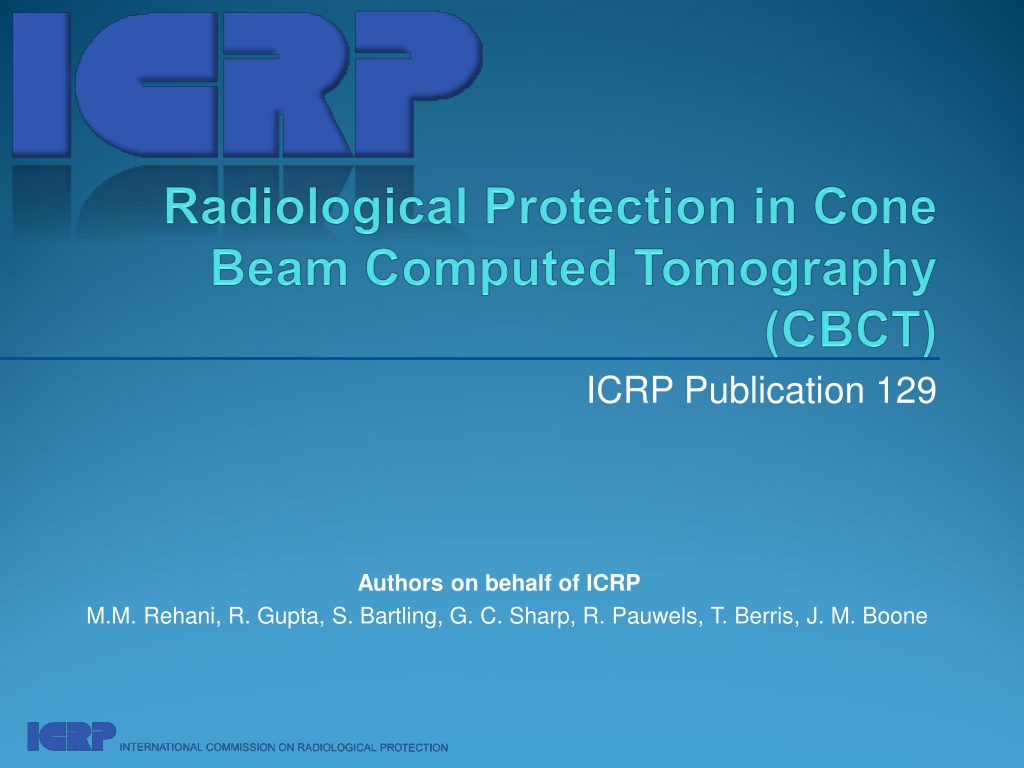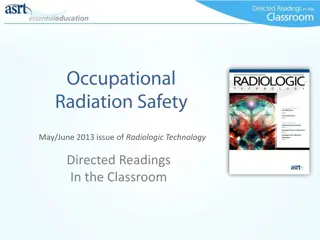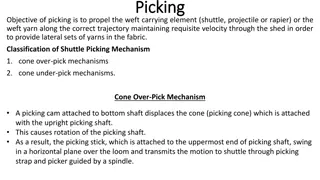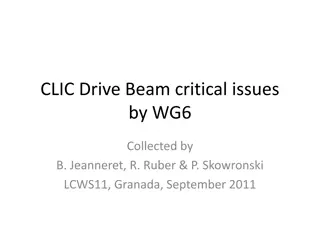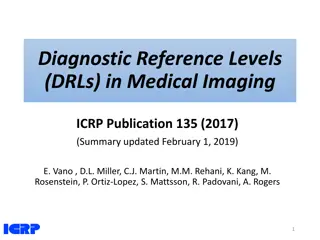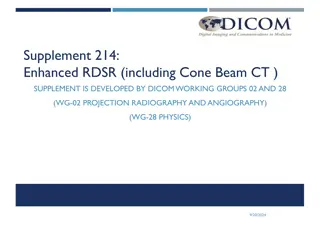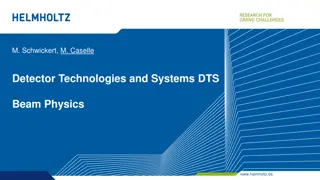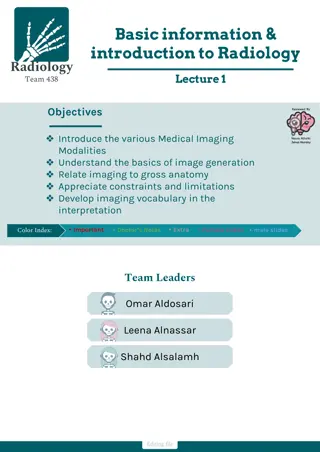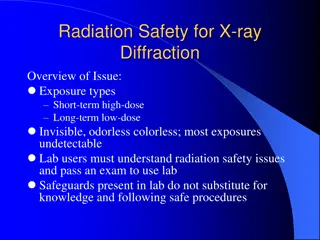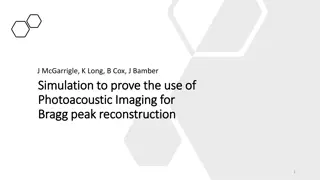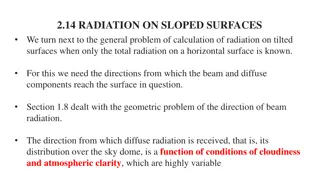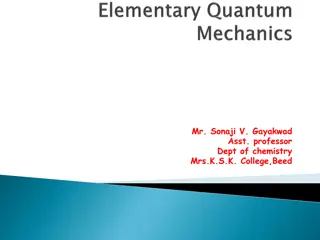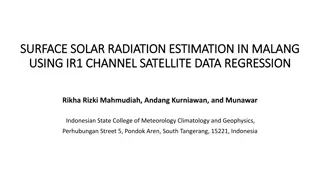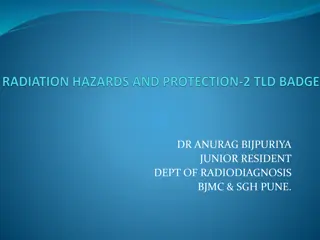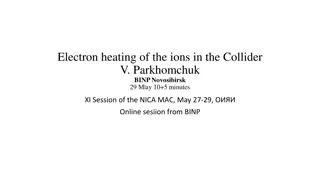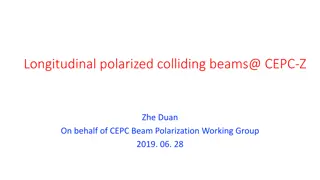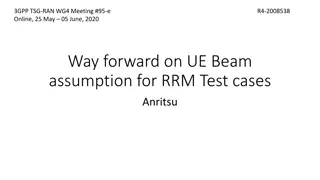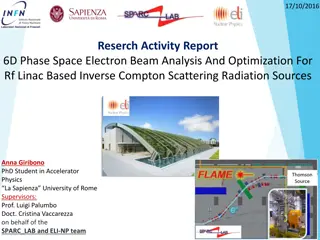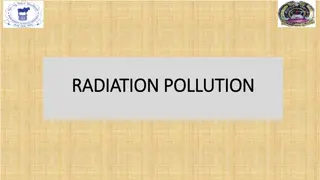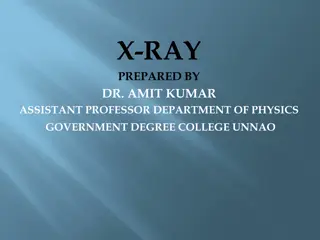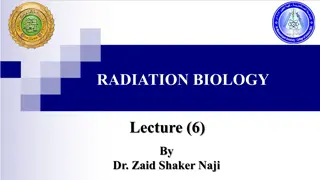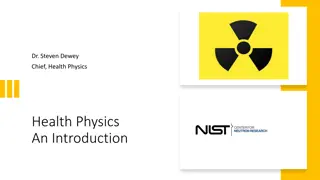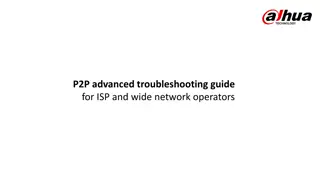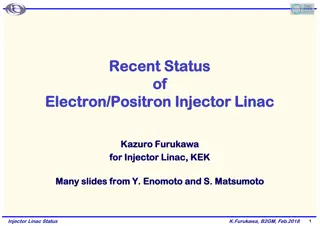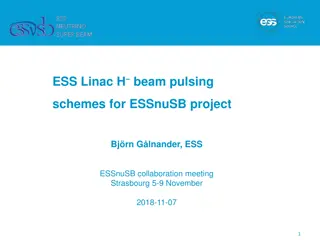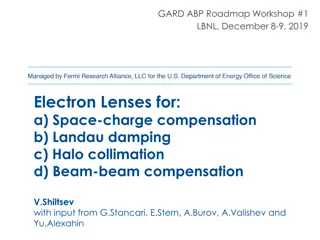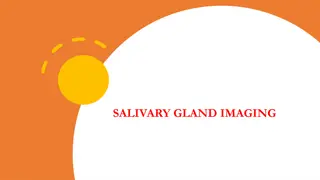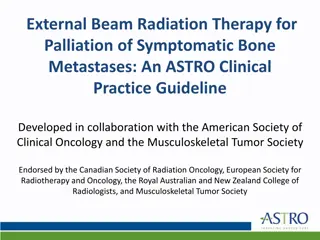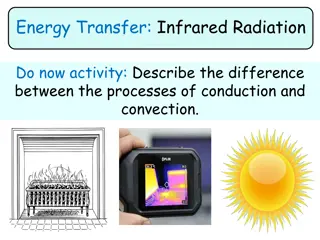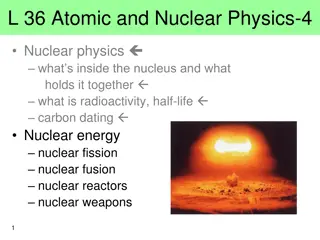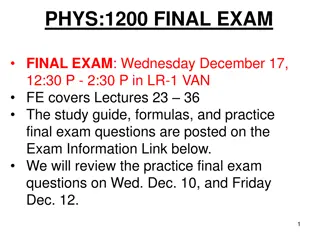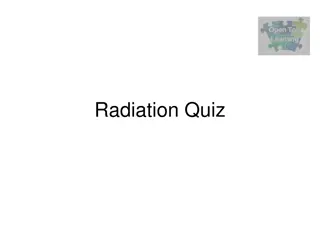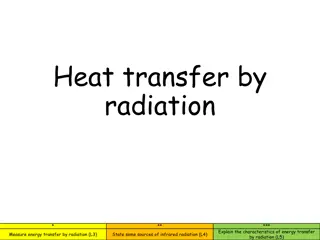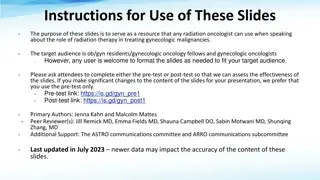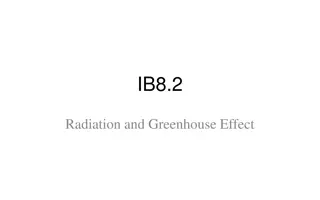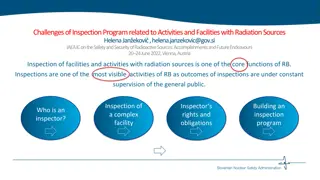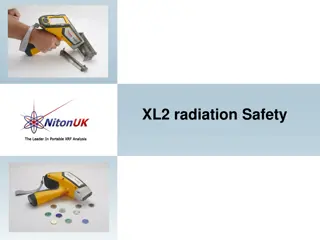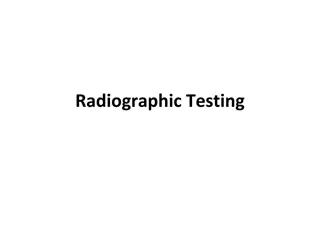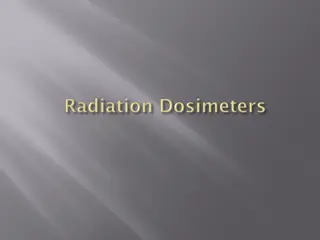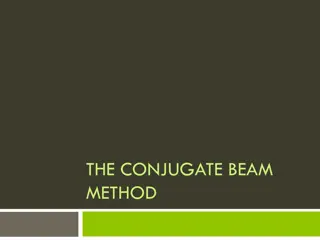Understanding Radiation Safety in Cone Beam CT Imaging
Cone Beam CT (CBCT) technology has revolutionized imaging in various medical fields, presenting unique radiological protection challenges. This summary highlights the importance of optimizing radiological protection for patients and workers using CBCT, emphasizing the need for informed decision-making in balancing clinical benefits with radiation risks. It addresses the distinctive issues associated with CBCT imaging, stresses the significance of proper training and quality assurance programs, and outlines recommendations for effectively managing radiation doses in specific applications. The summary also underscores the shift in perception regarding CBCT doses and the necessity for ongoing diligence by both manufacturers and users in ensuring safety and protection.
Download Presentation

Please find below an Image/Link to download the presentation.
The content on the website is provided AS IS for your information and personal use only. It may not be sold, licensed, or shared on other websites without obtaining consent from the author. Download presentation by click this link. If you encounter any issues during the download, it is possible that the publisher has removed the file from their server.
E N D
Presentation Transcript
ICRP Publication 129 Authors on behalf of ICRP M.M. Rehani, R. Gupta, S. Bartling, G. C. Sharp, R. Pauwels, T. Berris, J. M. Boone
This slide set copies information from ICRP Publication 129 in Main Points and in Recommendations Readers of this slide set are advised to go through the full publication for detailed information as this material is only a glimpse, rather than being a comprehensive presentation of contents 4
1. Introduction 2. CBCT Technology 3. The Biological Effects of Radiation 4. Principles of Radiological Protection for Patients and Workers 5. Assessing Patient Doses in CBCT 6. Optimisation of Protection of Patients and Workers in CBCT 7. Radiation Dose Management in Specific Applications of CBCT 8. Training Considerations for CBCT 9. Quality Assurance Programmes 10. Recommendations 5
CBCT extends the use of CT to areas that were not typically associated with CT imaging in the past, e.g. surgery, dental and otolaryngology (ear-nose-throat, ENT) imaging, angiography suites, radiotherapy treatment vaults, and orthopaedic imaging. The associated radiological protection issues are substantially different from those of conventional CT. The perception that CBCT involves lower doses was only true in initial applications. CBCT is now used widely by specialists who have little or no training in radiological protection. 6 ICRP P129 p.13 and p 9
The manufacturers of CBCT scanners have invested considerable effort into meeting the electrical and mechanical safety requirements of the users. Similar diligence is needed for issues related to radiation dose and radiological protection. This document provides a basis to develop informed decisions and to direct the usage of CBCT for optimising the trade-off between clinical benefit and radiation risk. 7
The ICRP emphasises that protection should be optimised not only for whole-body exposures, but also for exposures to specific tissues, especially those of the lens of the eye, thyroid, breast, heart, and cerebrovascular system. Equipment used for both fluoroscopy and CBCT should provide aggregate dose indices for individual patients during the entire procedure through electronic display on the operator console and a radiation dose structured report (RDSR file). 8
Optimisation of both patient and worker doses, particularly when the worker has to be near the modality, is important wherein monitoring of doses become an essential tool. Recording, reporting and tracking of radiation dose for an individual patient should be made possible in a consistent manner across vendors. Low dose protocols may be sufficient for diagnostic procedures focused on high-contrast structures, such as lung, bones, dental and maxillofacial scans, ENT scans (paranasal sinuses, skull, temporal bone), interventional material, and contrast-enhanced vessels (angiographic interventions). 9
Protocols with higher dose should only be selected if visualisation of low-contrast structures such as intracranial haemorrhage, soft-tissue tumours, or abscesses are the primary focus. Most interventional and intra-procedural C-arm CBCT systems can scan an angular range spanning 180o to 240o + the cone angle of the x- ray beam. Localised critical organs, such as the thyroid, eyes, female breasts and gonads, should be on the detector side of the arc, whenever possible. 10
Clinical need permitting, every effort should be made by users to ensure the volume of interest is fully incorporated in the field of view (FOV) provided by the CBCT scanners while radiosensitive organs are placed outside the FOV. The aim of CBCT should be to answer a specific diagnostic or intra-operative question vis- -vis other imaging modalities and not to obtain image quality that rivals MDCT. The decision by the referring practitioner to utilise CBCT should be made in consultation with the imaging professional. 11
There is a need to provide checks and balances, for example, dose check alerts implemented in CT in recent years, to avoid unintended high patient exposure as compared to locally defined reference values. Methods which provide reliable estimates of patient eye dose under practical situations should be established and utilised. The user of CBCT in interventions can influence the radiation dose imparted to the patient significantly by judiciously using a low-image- quality or low dose vs. a high-image-quality or high dose scan protocol. 12
In radiotherapy, justified use of CBCT has potential uses at different stages of therapy such as: pre-treatment verification of patient position and target volume localisation, evaluation of non-rigid misalignments, such as flexion of the spine or anatomic changes in soft tissue, and during or after treatment to verify that the patient position has remained stable throughout the procedure. Low-dose CBCT protocols should be used for pre-treatment alignment of bony structures. 13
Many machines were initially only capable of fluoroscopy, but can now additionally perform CBCT. Because of the improved clinical information in CBCT and its ability to remove overlying structures, the user may be tempted to over-utilise the CBCT mode. Users should judiciously use CBCT mode. In orthopaedics, justified use of CBCT can help in assessing the 2 dimensional position of fractures and implants with respect to the bony anatomy, especially in situations where fluoroscopy alone is insufficient, and thus can help in patient dose management. 14
In urology, low-dose CBCT protocols should be used when imaging high-contrast structures, such as calcified kidney stones or device placements. Dental and maxillofacial CBCT scans should be justified, considering alternative imaging modalities. Once justified, it should be optimised to obtain images with minimal radiation dose without compromising the diagnostic information. 15
The level of training in radiological protection should be commensurate with the level of expected radiation exposure (ICRP, 2009). All personnel intending to use CBCT for diagnostic purposes should be trained in the same manner as for diagnostic CT and those intending to perform interventional CBCT should be in trained in same manner as for interventional CT. 16
1. Expanded availability and newer applications have put CBCT technology in the hands of medical professionals who do not traditionally use CT. ICRP s radiological protection principles and recommendations provided in earlier publications, particularly Publications 87 and 102 apply to these newer applications and should be adhered to. 17
As many applications of CBCT involve patient doses similar to MDCT, the room layout and shielding requirements in such cases need to be similar to protect workers adequately. Medical practitioners bear the responsibility for making sure that each CBCT examination is justified and appropriate. 2. 3. 18
4. When referring a patient for a diagnostic CBCT examination, the referring practitioner should be aware of the strengths and weaknesses for CBCT vis- -vis MDCT, magnetic resonance imaging, and other competing imaging modalities. The decision to utilise CBCT should be made in consultation with an imaging professional. 5. Manufacturers are challenged to practice standardised methods for dosimetry and dose display in CBCT in conformance with international recommendations such as ICRU. Unfortunately, at present, there is wide variation in dose quantities and units being displayed in CBCT machines. The users are often unable to compare doses among different scanners or protocols. 19
6. Use of CBCT systems for both fluoroscopy and tomography pose new challenges in quantitating radiation dose. There is a need to develop methods that aggregate exposures to individual patients during the entire procedure that may utilise a combination of fluoroscopy and CBCT during a given examination. 7. Recording, reporting and tracking of radiation dose for an individual patient should be made possible in a consistent manner across vendors. 20
8. There is a need to provide checks and balances (e.g. dose check alerts implemented in CT in recent years), to avoid unintended high patient exposure as compared with locally defined reference values. 9. Positioning radiosensitive organs such as the thyroid, the lens of the eye, breasts and gonads on the detector side during the partial rotation scan is a useful feature in CBCT that needs to be utilised for radiological protection of these organs. 21
10. Many machines were initially only capable of fluoroscopy, but can now additionally perform CBCT. Because of the improved clinical information on CBCT, and its ability to remove overlying structures, a user may be tempted to over utilise the CBCT mode. Users must understand that the CBCT function of their system is not a low-dose fluoroscopy run and use this mode judiciously. 22
ICRP, 2015. Radiological Protection in Cone Beam Computed Tomography (CBCT). ICRP Publication 129. Ann. ICRP . 23
www.icrp.org 24
